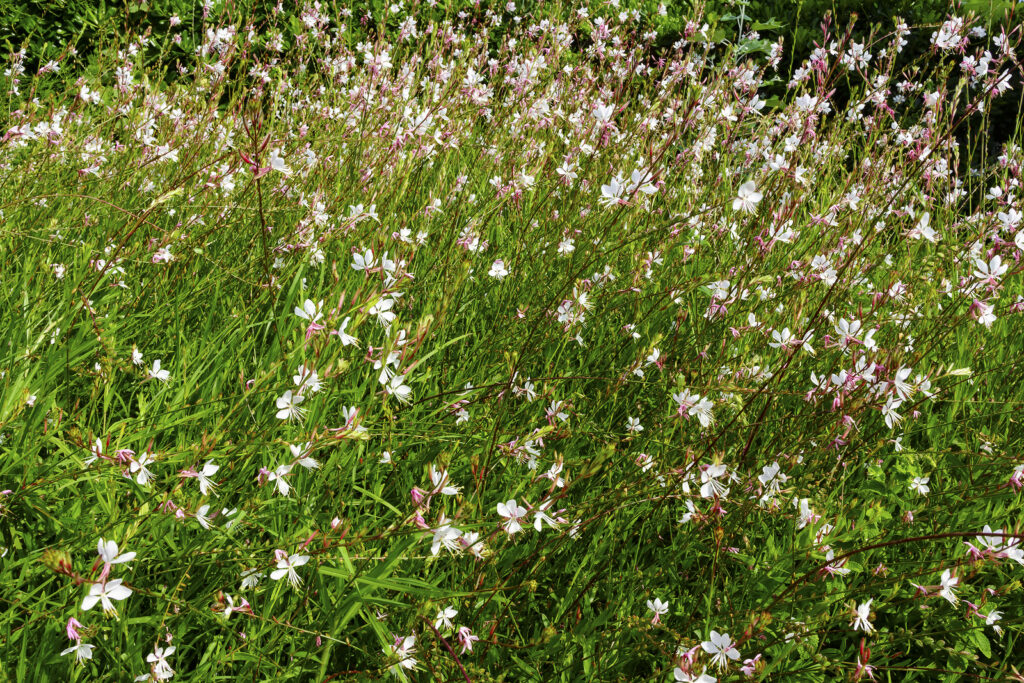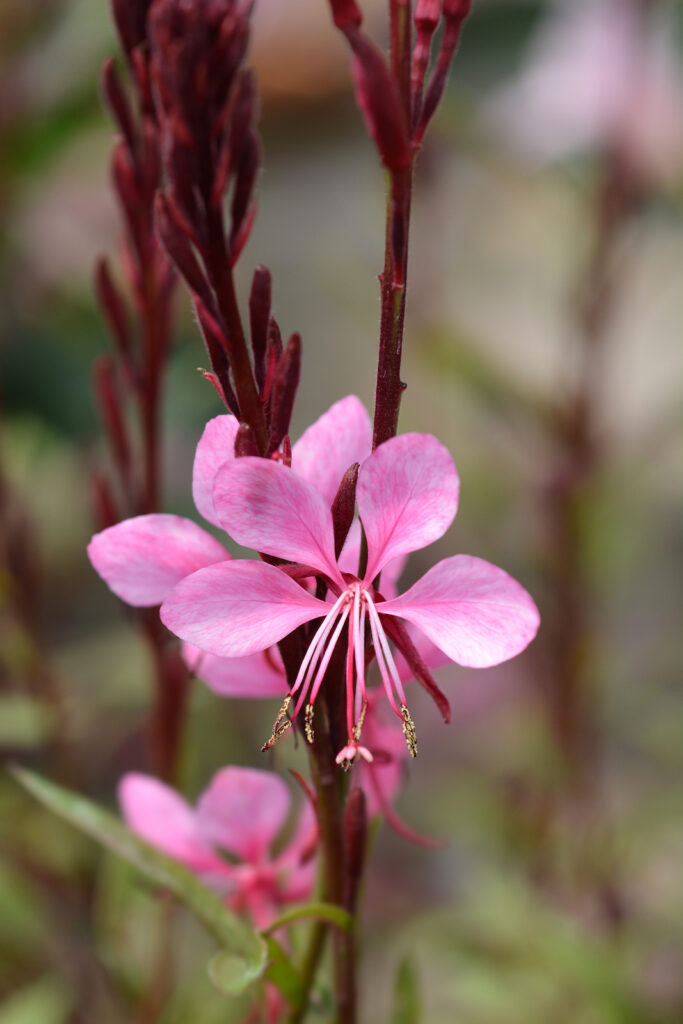Gaura–commonly called wand flower–is an upright perennial that bears white or pink starry flowers on long wiry stems from summer to fall. Gaura is suited for beds and borders where it can catch the breeze and waft freely in the wind.
There are 20 species in the Gaura genus, but only one is commonly grown in gardens, Gaura lindheimeri is commonly grown in gardens.
Plant Gaura in drifts where the flowers can catch the breeze. Plant Gaura in perennial borders and in cottage gardens or meadows.

Get to know Gaura
- Plant type: Perennial
- Growing Zones and range: Zones 5-9
- Hardiness: Hardy to -10°F (-23°C), will partially die back in a freeze
- Height and width: 3 to 7 feet (1-2.1m) tall; 2 to 3 feet (1m) wide
- Foliage: Most basal leaves are usually lance-shaped or elliptic or spoon-shaped.
- Flowers: Star-shaped flowers are carried on spikes.
- Flowers colors: White or pink
- Bloom time: Late spring through frost
- Common name: Wand flower, white gaura
- Botanical name: Gaura lindheimeri
- Family: Onagraceae
- Origin: Native to moist places and grasslands in Texas and Louisiana
Where to plant Gaura
- Plant Gaura in full sun; wand flower tolerates light shade in Zones 7-9.
- Grow Gaura in sandy, well-drained soil; wand flower will tolerate some clay in the soil.
Gaura uses and companions
- Place Gaura near the front of a border to create a soft see-through effect.
- Use Gaura in informal and naturalistic gardens.
- Good garden companions for Gaura are Achillea, Artemisia, Cosmos atrosantuineus, Limonium latifolium, Oenothera, Verbena regida.

When to plant Gaura
- Set established Gaura plants in the garden in spring.
- Sow seed in the garden in spring or start seed in a cold frame in late winter.
Planting and spacing Gaura
- Space wand flower plants 24 to 36 inches (61-91cm) apart.
- Sow Gaura seeds 1/8 inch deep in evenly prepared soil in spring.
How to water and feed Gaura
- Keep the soil just moist; Gaura will tolerate drought. If soil is too moist plants may sprawl.
- Feed Gaura with an all-purpose fertilizer in spring and mid-summer or side-dress with aged compost.
Gaura care
- Trim spent flowers to produce new blooms.
- Cut wand flower back in midsummer to control plant size and encourage further flowering.
- Stake plants that sprawl.
- Gaura has a long taproot making it difficult to transplant or divide.
- Gaura self-seeds and can become invasive if not controlled.
Gaura pests and diseases
- Gaura is prone to leaf spot, rust, and mildews.

Gaura propagation
- Sow seeds of annual in the garden in spring.
- Gaura seeds will germinate in 14 to 28 days at 70°F (21°C); refrigerate seeds for 60 days before sowing.
- Start seeds of perennials in containers in spring.
- Perennials can be divided in spring.
- Start softwood cuttings in spring.
Gaura varieties to grow
- Guara lindheimeri, white gaura: shrubby wildflower grows 3 to 4 feet tall with airy, erect panicles of 1-inch-wide white flowers that fade to pink from early summer to fall; cultivars include ‘Whirling Butterfly’ grows 3 to 4 feet high and seldom reseeds; ‘Corrie’s Gold’ has leaves edged in gold; ‘Siskiyou Pink’ bears light pink flowers; ‘Karalee White’ is a popular white flower variety.



